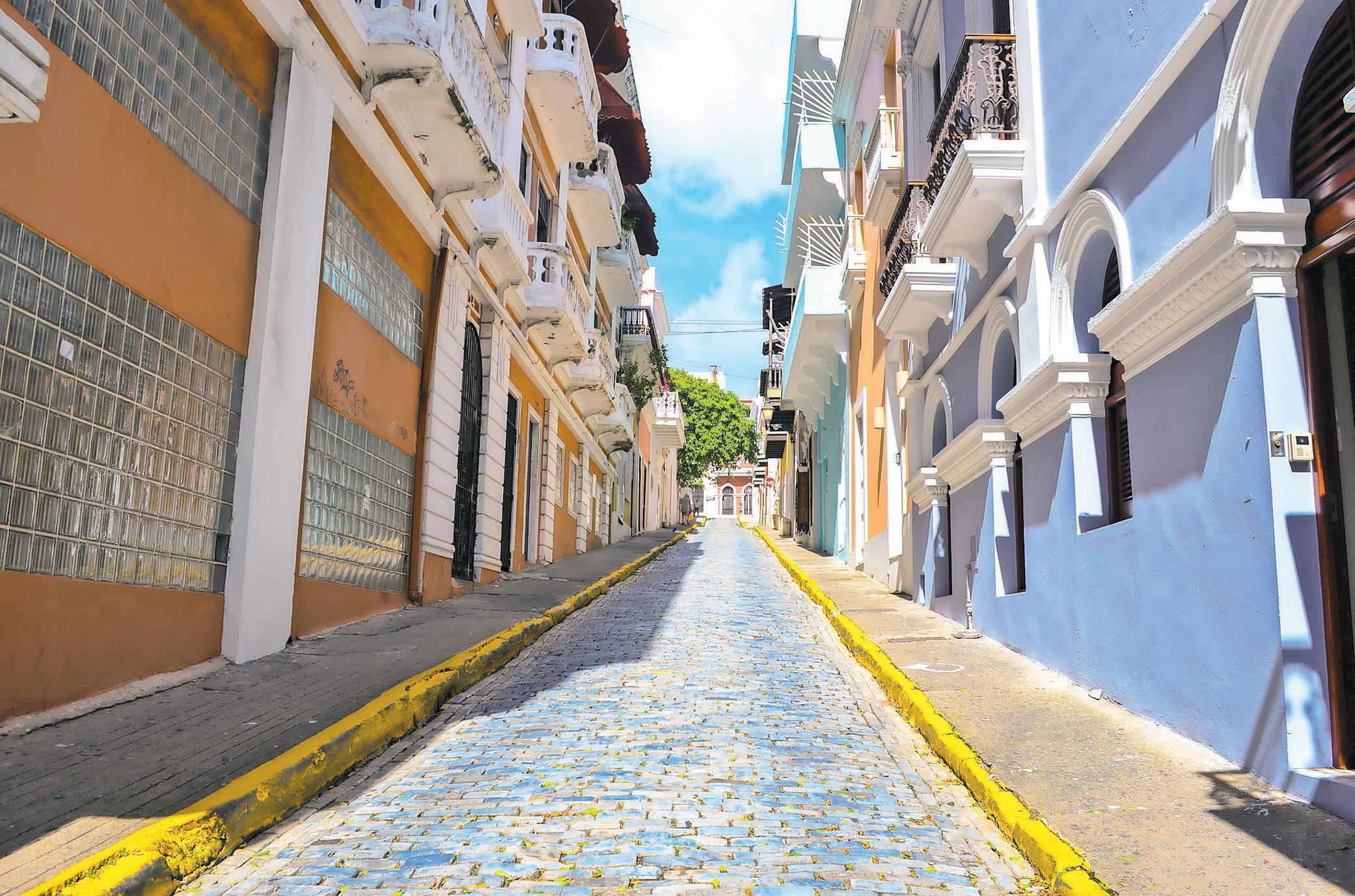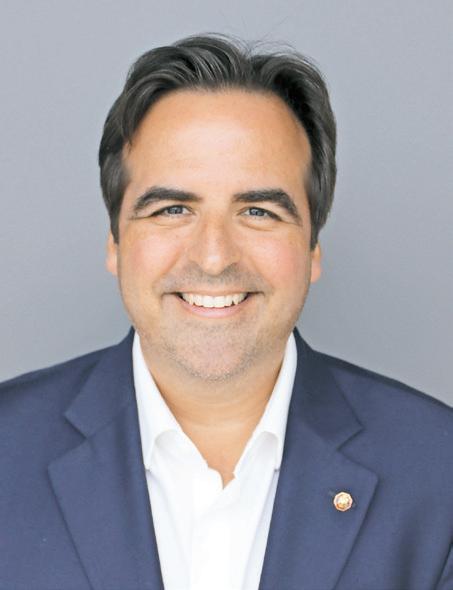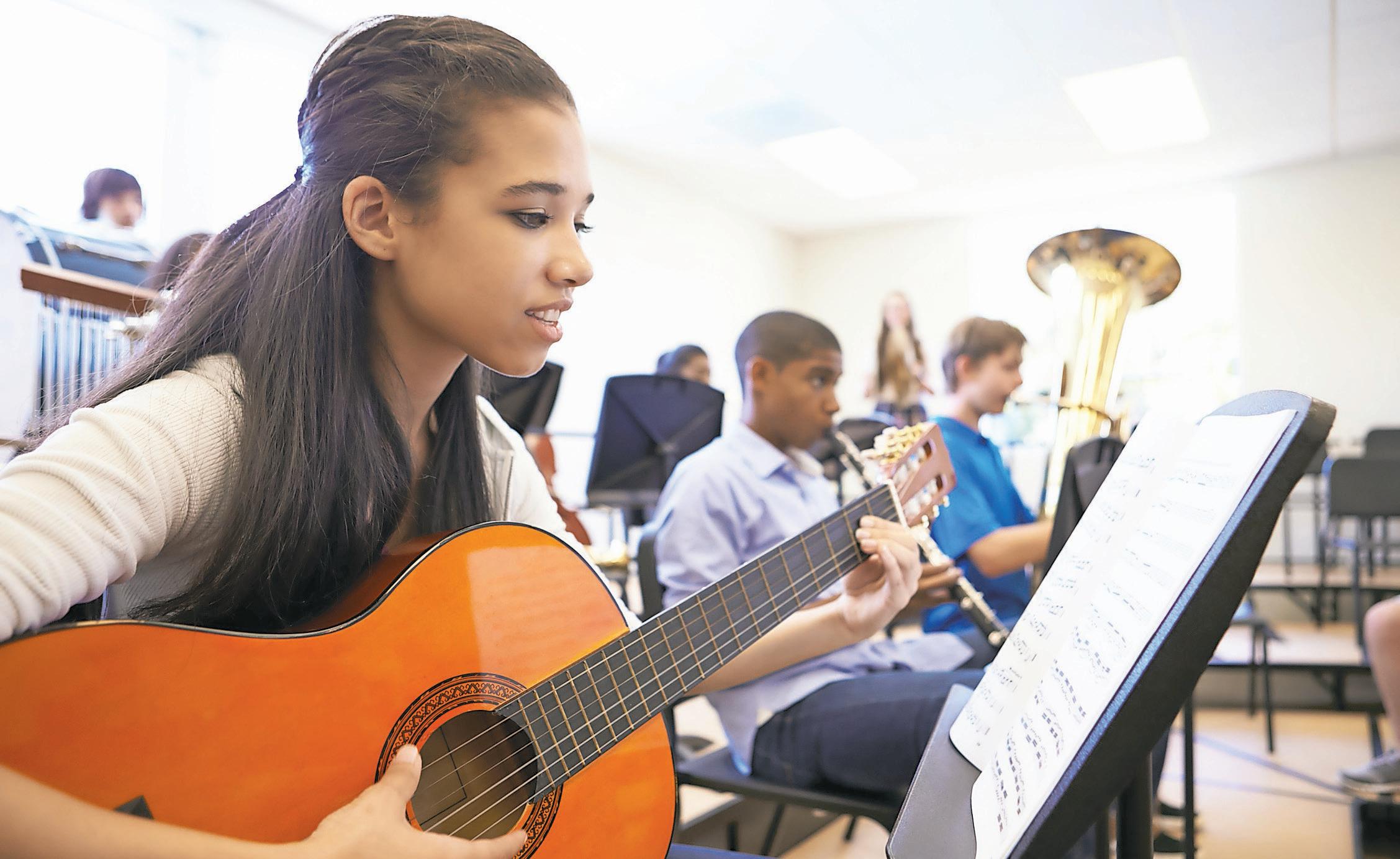The real estate market in Puerto Rico has been growing uncharacteristically soft, due to the frequent increases in interest rates authorized by the Federal Reserve Bank (the Fed). The goal behind increasing the rates is to slow down the economy enough to curb inflation but without causing a recession. So far, with each increment

a similar increment in inflation has occurred, when it didn’t stayed the same.
lending has become increasingly

expensive and, even though the real estate industry has not come to a grinding stop, it has decreased its activity significantly, with increments causing interest rates four or five percentage points higher than last year.
“If we compared interest rates today with 2020’s and 2021’s increments are very significant. We must remember that back then you could get a mortgage at 3.5 percent. Nowadays a regular mortgage has a 7.5 percent interest rate,” explained Luzmarie Vélez-Miró, president of the Puerto Rico Mortgage Bankers Association

Wednesday, October 26-November 1, 2022 - // no. 183 www.theweeklyjournal.comPuerto Rico and the Caribbean GO TO PAGE 4 AffordAble housing A roAd to recovery P10 tiktok unAble to filter MisinforMAtion P9 Interest rates are four or five percentage points higher than last year soMething’s gottA give: offer And deMAnd in Puerto rico’s reAl estAte MArket Pr’s restAurAnt guest Profile P6 bAcArdí cAsitA de rones liMited edition P14
in interest rates,
In the meantime,
Juan A. Hernández, The Weekly Journal
TOURNAMENT










Más fresco... ninguno.



CHARITY 2022
2 The Weekly Journal > Wednesday, October 26, 2022 >
a week in review
Hone Your Ax-tHrowing SkillS At tHe Viking ArenA

The Viking Arena is a new family entertainment center that offers diverse activities for guests of all ages all under one roof, in a large venue of more than 26,000 square feet. The innovative space was created thanks to an investment of $3 million and has created 100 jobs, both direct and indirect. Viking Adventure Park has over 21 varied attractions such as the Rope Course, an obstacle course in the heights that includes a zipline, the Warrior Course with wide jets and inflatables where you can climb and battle your friends and enemies, among other adventures; and the Climbing Wall and Pillars that finish off an exciting day of adventures in the park. Additionally, the park offers an ax-throwing range, called the Viking Ox Range. Designed with rigorous safety standards, adults can compete in teams as warriors, in pairs or in groups. To satisfy the palate, the Viking Lounge is mixing up exquisite cocktails, wines and incredible cuisine with wild flavors.
libertY’S “wowFi” bringS FuturiStic wi-Fi SerViceS to cuStomerS

Using its SuperPod extenders and a companion mobile app, Liberty WowFi allows customers to access and control their Wi-Fi network from their smartphone device. More than just another meshed Wi-Fi (Wi-Fi mesh) network product, Liberty WowFi uses cutting-edge artificial intelligence (AI) that auto optimizes the network daily to maximize the experience for each device, user and application. WowFi provides consistent internet service throughout the home without any degradation in signal quality, and channel optimization automatically chooses the best wireless channel to create the smoothest experience. Powered by Plume, a global software as a service (SaaS) company headquartered in California, Liberty WowFi provides a growing suite of smart home services that customers can quickly install and offers a range of innovative services. Through the app, customers have complete control of their Wi-Fi network, have visibility and control of connected devices, change the SSID or password, as well as create a network of guests or only internet and customize them. They can also put the network, device or user on pause.
FedEx has just inaugurated a 3,980 square foot temperature-controlled room at the Luis Muñoz Marín International Airport. This room, located in the airport’s Ramp of Operations, is a state-of-the-art space. The facility increases the island’s capabilities to transport temperature-sensitive pharmaceutical products to more than 220 countries and territories served by FedEx, strengthening the local sector’s ecosystem, which represents 30% of the island’s GDP. Earlier this year, Puerto Rico became the first market in Latin America and the Caribbean to apply the FedEx innovative SenseAware ID. This sensor-based technology logistics device enables customers to monitor location and conditions of their shipments in real time while it’s in the FedEx network, from point-of-pickup to delivery.

/ Wednesday, October 26, 2022 3
President Salvador Hasbún shasbun@elvocero.com Vp of Marketing and Business Operations Michelle Pérez Miperez@elvocero.com VP of Accounting Félix A. Rosa frosa@elvocero.com VP of Production Eligio Dekony edekony@elvocero.com Human Resources Director Arlene Rolón, PHR arolon@elvocero.com VP of Editorial Content Juan Miguel Muñiz Guzmán jmuniz@elvocero.com Multi-Platform Graphic and Technology Director Héctor L. Vázquez hvazquez@elvocero.com Multi-Plataform Digital Director Rafelli González Cotto rgonzalez@elvocero.com Powered BY El Vocero de Puerto Rico, 1064 Ave Ponce de León 2nd floor San Juan, PR Postal Address: PO Box 15074, San Juan, PR 00902 Phone: 787-622-2300, 787-721-2300 Customer Service: 787-622-7480
FeDex’S temperAture-controlleD room StrengtHenS pHArmAceuticAl Sector
(PRMBA). “It is not just that interest rates have increased, but that they have done so very quickly.”
The impact of such hikes could cause that a buyer that had been pre-qualified for a mortgage loan lose his qualification from one week to another. This is because higher interest rates also mean higher mortgage payments.
“Banks have been trying to reinvent themselves looking for ways to help out their clients, but this is a difficult situation. This is a very volatile market that changes not from month to month, but from one week to another,” Vélez-Miró said.
To illustrate the market’s situation Vélez-Miró mentioned that last year, a costumer seeking a $100,000 mortgage at a then available 3.5% interest rate, would end up with an approximate $450 monthly payment (principal + interest). That same mortgage today, at a 7.5% interest rate would pay $700, or $250 more.
“One might think that this is not necessarily a significant hike, but when you take into consideration that the cost of all other consumer’s needs has increased due to inflation, that extra mortgage payment is onerous,” Vélez-Miró argued.
When comparing this period –from Jan. to Sept. 2022– to last year’s, there is a 40 percent (total sales) decrease in the mortgage market.
The PRMB president pointed out that, when comparing this period –from Jan. to Sept. 2022– to last year’s, there is a 40 percent (total sales) decrease in the mortgage market. “This also includes the refinancing market, which has been virtually eliminated by the monumental interest rate increase,” she added. “What we are seeing now are sales, which have decreased substantially.”
Vélez Miró conceded there is a limited number of refinancing transactions being done, but those are from specific customers who are mainly looking to cash-out on their equity to consolidate their debt and/or to make some improvements to the property. On either case, these customers
may keep a mortgage payment similar to the one they originally had at the cost of extending the life of the loan.
For Cari Quiroga, former president of the Puerto Rico Realtors Association (PRRA), people start to get nervous whenever interest rates change, and when those changes happen too quickly.


The former realtors’ president agreed with Vélez-Miró that while the real estate market has shrunk, it is far from a crisis.
“People got use to low interest rates. Of course we have had much higher interests in the market before, still, people worry because these changes

/ Wednesday, October 26, 20224 CONTINUED FROM PAGE 1
Front of a building with an old-fashioned balustrade with a For Rent sign in Old San Juan.
Colonial buildings in Old San Juan.
Banks have been trying to reinvent themselves looking for ways to help out their clients… This is a very volatile market that changes not from month to month, but from one week to another.
Luzmarie Vélez-Miró, president PRMBA
In fact,
impact property prices and, if a buyer is close to the cutline between qualifying or not for a mortgage loan, the transaction is at risk,” Quiroga said.

While such a scenario is possible, Quiroga admitted she works the higher end of the real estate market, more specifically, second homes and vacation properties.
This segment of the real estate market, which Quiroga identified has comprised of $500,000 properties and higher, has not been significantly affected by the interest rate hikes.
“They [high-end buyers] have not stopped buying because interest rates are high,” she said. “Nevertheless, if they haven’t done it [bought a property], they wait for a while for the market to stabilize.”
Vélez-Miró coincided with Quiroga saying that high-end buyers are not necessarily affected by interest hikes because they have greater purchasing power and could even opt for buying cash.
But for veteran realtor Fernando Báez, the situation is not new, and it only reflects how the market is in the process of readjusting itself.

The Eye Of The Beholder
Báez considers there are a lot of new real estate agents in the field that, because of their inexperience, consider the situation as alarming. He contends to the contrary.
“We have had interest rates never seen before… 1.89% for 15-year [mortgages]. Regular interest in those years was between 7 and 7.5% on FHA (Federal Housing Administration), and that was considered low,” recalled Báez. “I sold [properties] at 10.5 and 11% in Condado at the peak of the real estate business… Costumers? They were all happy.”
Báez, founder and president of Báez and Associates Real Estate, contends that, contrary to the general perception, Americans and foreigners are not the ones acquiring most of the island’s real estate nowadays.
Báez is quick to point out “there are Americans buying on the island, but they are buying more expensive properties, and they are not that many either.”
What The Future May Bring
For the last couple of years, most of the transactions between $150,000 and $450,000 are done by Puerto Ricans that resided in the U.S. and are returning to the island after they retire.
same for the immediate future.”
The island’s real estate market is slowly stabilizing, according to Báez, and it will do so without any major incident “like many anticipate because they have not live the times when 10.5 and 11% was easy peasy.”
In fact,
Vélez-Miró is not optimistic about the near future of the real estate market in Puerto Rico. She recalled that the Fed has already announced that it is still considering an increase of 75 base points to the interest rate soon. “I wish it would be a totally different outlook, but the fact is that it seems everything will stay the
For Báez, real estate is the island’s untapped resource. The realtor argues the next step in real estate development is promoting that Puerto Ricans come back to the island for their retirement, along with Americans looking to make the island their second home. That will become a new source of income for Puerto Rico.
“These people have families that would come to visit their relatives living in Puerto Rico, thus expanding the tourism industry,” Báez argued. “This is what the Dominican Republic, Colombia and Costa Rica are doing: marketing their countries as retirement destinations in the U.S. Why can’t we do the same?
“For the last couple of years, most of the transactions between $150,000 and $450,000 are done by Puerto Ricans that resided in the U.S. and are returning to the island after they retire… They sell their homes in the mainland and come to Puerto Rico for their retirement, and in many instances buying their new homes cash,” Báez contended.
The 35-year industry veteran argues that “east coast baby boomers used to retired to Florida” but not anymore, because it has become too expensive.
“Florida is not an alternative anymore for Puerto Ricans on the east coast. Between the cost of living, property taxes and medical insurance, Florida is not their first choice, and they are coming here now,” he said. “They are the ones buying cash $150,000 and $450,000 properties.”
/ Wednesday, October 26, 2022 5
Fernando Báez, realtor
Aerial shot of Condado, San Juan.
High-end buyers are not necessarily affected by interest hikes because they have greater purchasing power and could even opt for buying cash.
In fact,
Consumers report spending $493 a month dining out nowadays, vis-a-vis the $380 they spent in 2018, the year of the previous study.
The new reality of eating out in Puerto Rico
The Covid-19 pandemic promoted changes in consumers habits and trends
to the new realities with greater tolerance than expected.
“The industry is entering a new normal, from the consumer standpoint, despite the very challenging conditions for operators,” said José Alonso, president of The Research Office. “That could very well be explained by the fact that restaurants provide an emotional reward in terms of socializing with friends and loved ones.”
eople going out for dinner in Puerto Rico are very well aware of “a new reality” within the restaurant and hospitality industry after the Covid-19 pandemic, and they have accepted it without any major complaints, according to a recently published study by the Puerto Rico Restaurants Association (ASORE, for its Spanish acronym).
The study –“Estudio ASORE de Tendencias” (EAT)–details the changes in consumers habits and trends promoted by the Covid-19 pandemic, the increase in remote work, the reduction in the number employees in restaurants, the changes in the distribution chain and the closing of dining venues, along with the challenges the industry faces.
“Never before have we experienced so many changes, simultaneously. Certainly, these changes have forced us to rethink the way we did business. Great challenges required creative ‘out of the box’ ideas in order to keep quality and service for our customers. After looking at the results of EAT 2022, I can say today that the restaurant industry successfully faced adversity and our clients understand and support us,” said ASORE president Mateo Cidre.
The study, commissioned to The Research Office, reveals the changes made by the restaurants to meet the challenges crated by the pandemic have been accepted by the customers, who have adapted
More visits, more spending
Also, consumers are spending more eating out now, than they did in 2018, two years before the coronavirus outbreak. More specifically, consumers report spending $493 a month dining out nowadays, vis-a-vis the $380 they spent in 2018, the year of the previous study.
The study identified more than a dozen “Key Performance Indicators” by venue, to illustrate the changes in the consumers’ habits when dining out. Of these indicators, the one with the higher usage for this year is the Quick Service Restaurant (QSR) or fast foods. According to the study, 73% of those surveyed reported visiting a QSR –the highest of all indicators– an average of 7.5 times per month and spending and average of $24.00 per visit. QSRs peak among families with kids.

In terms of usage, QSRs were followed by Casual Diners (38%), Bakeries (37%), Family Restaurants (295), Cafeterias (27%), Pizza Restaurants (21%), Food Trucks (21%) and Chinese Restaurants (21%), among others.
In terms of the number of visits per month Bakeries lead the indicators with 10.9 visits, followed by Cafeterias (10.8) and Coffee Shops (10).
Alonso admitted though, that most of this increase is because customers are paying more for their meals at the different restaurants. “Most of this growth is driven by higher prices,” he said while pointing out that “estimating how much of
The industry is entering a new normal, from the consumer standpoint, despite the very challenging conditions for operators.
the increase is due to inflation cannot be done because figures depend on the kind of restaurant, and/or the individual sales.”
In terms of pent-up demand (the consumer’s ‘accumulated’ demand after a period economic uncertainty), the study revealed it to be higher for takeout and delivery than for dining-in. For Alonso this could be a consequence of the consumer “discovering the convenience of off-premise options during the pandemic.” Also the availability of new technologies to improve service and make ordering and payment easier may be contributing to this increase.
Nevertheless, while the Puerto Rican consumer is ready to embrace technology, he would reject the use of technology to the extent that displaces workers from their posts, arguing it is “too much technology.”
According to Alonso, restaurants provide Puerto Rican consumers a socializing experience that no other venue can provide, thus making dining out a better experience than any other activity.
“As long as the industry is able to deliver an emotional reward beyond the mere transaction, it has its future assured,” Alonso concluded.
/ Wednesday, October 26, 20226
P
José Alonso, president The Research Office.
Juan A. Hernández, The Weekly Journal
Thank you!Thank you!
Orlando International Airport Opens New Terminal C
JetBlue will be the only U.S. carrier housed in the new terminal
Zoe Landi Fontana, The Weekly Journal

ith a new terminal for international arrivals and departures, the Orlando International Airport (MCO) is looking swank in the face of the upcoming bustling holiday season. As of this week, JetBlue is the official anchor tenant at MCO’s Terminal C – the brand new international terminal, equipped with stateof-the-art features.
This marks the completion of the airline’s moving of operations from the old Terminal A to the new facility. It will be the only US carrier in the international terminal.
experience for our customers as we continue our growth in the region.”



WOfferings At Terminal C
If you’re flying into MCO, it’s worth it to stop by Terminal C. The terminal has a modern, bright design and is equipped with new security technology including a baggage handling system, 100% automated TSA screening lanes, and facial recognition systems for international departures and arrivals.
In fact,
Jetblue plans to operate an estimated 70 daily flights to 22 different destinations this December.
The airline plans to operate an estimated 70 daily flights to 22 different destinations this December. JetBlue has operated in Orlando since 2008 and currently employs over 4,000 crewmembers based in the city. The move to the new terminal bolsters the airline’s service to the region and strengthens the already robust presence in Orlando.
“We are excited to lead the way as the anchor tenant at Orlando International’s new Terminal C,” said Joanna Geraghty, president and chief operating officer, JetBlue. “The terminal’s offerings are great, with remarkable architecture and a variety of food and retail options. This move not only shows our commitment to Orlando and the greater area, but it will also provide a new and elevated
Travelers loathe long layovers, but Terminal C is doing its best to change the negative preconceptions of having to stick around for a few hours. The new facility has over 10 retail establishments and more than 20 food and beverage options to keep guests entertained and well-fed.
For anyone traveling between the Orlando International Airport and surrounding areas, transportation is within a few steps. The facility is linked to a new rail station connecting Brightline rail service to and from South Florida. There are future plans to link the terminal to the local SunRail service as well.
“Terminal C is a vision-toreality story that fits well with JetBlue’s values and award-winning innovation,” said Kevin Thibault, chief executive officer, Greater Orlando Aviation Authority. “We welcome JetBlue to Terminal C and look forward to having it provide an enhanced travel experience for the domestic and international passengers they serve annually.”
THANK YOU FOR YOUR GREAT EMPATHY AND ACTION!
THANK YOU FOR YOUR GREAT EMPATHY AND ACTION!
/ Wednesday, October 26, 2022
Great community support to many victims of Hurricane Fiona.
Arqto. José A. Rodríguez Barceló Chardry Tirado Christopher Wilbur Debra Agliano Dezarie and Paul Meyers Eaton Corporation Ellen Davis
Enrique Hernandez Erin Daily Evertec Inc. Fances Ríos de Morán FirstBank Fundación Fonalledas Jeff and Eric Berry and Politzer
John Gregoire Joshua Pitney Lopito Ileana & Howie Lilly del Caribe Matt McGue New Fortress Energy PIA of Puerto Rico & the Caribbean Pulitzer Bogard & Associates, LLC New York Ron Lenneberg Scott Cook Susan Harvey The 20/22 Act Society United Way Worldwide Yarbrough Family Foundation
United Way of Puerto Rico warmly thanks all the companies, foundations, organizations and individuals, who with their economic donations, have made it possible to support the families of our Puerto Rican community affected by the ravages caused by Hurricane Fiona.
Among
others.
7
China’s economic growth accelerated in the latest quarter but still was among the slowest in decades as the country wrestled with repeated closures of cities to fight virus outbreaks.
>Chinatopix via AP
China’s economic growth accelerates but weak amid shutdowns
The ruling Communist Party tries to reverse a downturn
Joe McDonald – The Associated Press
BEIJING — China’s economic growth accelerated in the latest quarter but still was among the weakest in decades as the ruling Communist Party tries to reverse a downturn while enforcing antivirus controls and a crackdown on debt in its vast real estate industry.
The world’s second-largest economy grew by 3.9% over a year earlier in the three months ending in September, up from the previous quarter’s 0.4%, official data showed Monday.
The planned release of data last week was postponed while the ruling Communist Party met to award President Xi Jinping a new term as leader. Investors and the Chinese public watched the meeting for initiatives to stimulate the economy or reduce the impact of the “Zero COVID” strategy that has shut down cities and disrupted business, but none were announced.

The improvement is “mainly a result of more
flexible” anti-virus controls that isolate individual buildings or neighborhoods instead of cities, said Iris Pang, chief economist of ING in a report. But she said more lockdowns are “still a big uncertainty.” ING is a Dutch multinational banking and financial services corporation headquartered in Amsterdam.
“This uncertainty means the effectiveness of pro-growth policy would be undermined,” Pang said.
No data were immediately released for growth compared with the previous quarter, the way other major economies are measured. In the quarter ending in June, the economy shrank by 2.6% from the previous three-month period.
Growth slid in the second half of 2021 after controls on debt that regulators worry is dangerously high caused a slowdown in real estate, one of China’s biggest economic engines. Growth slumped to 4% over a year earlier in the final quarter.
some areas at a time when other countries are easing anti-virus controls.
For the first nine months of 2022, growth was 3% over a year earlier, barely half the ruling party’s official 5.5% target. Leaders have stopped talking about that goal but promised easier lending and other measures to boost growth.
In fact,
Initiatives to stimulate the economy or reduce the impact of the “Zero COVID” strategy that has shut down cities and disrupted business, have not been announced.
The International Monetary Fund and private sector forecasters have cut their outlooks for annual growth to as low as 3%. That would be the second-weakest since the 1980s after 2020, when growth plunged to 2.4% following the shutdown of much of the economy for two months to contain the coronavirus outbreak.
The slump hurts China’s trading partners by depressing demand for imported oil, food and consumer goods.
Iris Pang, chief economist at ING
Beijing has eased mortgage lending and local governments have taken over some unfinished projects to make sure buyers get apartments. But regulators are sticking to limits on debt that have forced developers into bankruptcy and caused some bigger competitors to miss payments to bondholders.
The ruling party’s “Zero COVID” strategy has temporarily shut down Shanghai and other industrial centers despite rising costs and public frustration. That has boiled over into protests in
Repeated shutdowns and uncertainty about business conditions have devastated entrepreneurs who generate wealth and jobs. Small retailers and restaurants have closed. Others say they are struggling to stay afloat.
Beijing is using cautious, targeted stimulus instead of across-the-board spending, a strategy that will take longer to show results, economists say. Chinese leaders worry too much spending might push up politically sensitive housing costs or corporate debt.
Growth for the first half of the year was 2.5% over a year earlier, one of the weakest levels in the past three decades.
/ Wednesday, October 26, 20228
This uncertainty means the effectiveness of pro-growth policy would be undermined.
Report: TikTok bad at culling U.S. election misinformation ads

More young people use it not just for entertainment, but also for finding information
Barbara Ortutay – The Associated Press
TikTok’s algorithms are very good at finding videos to keep people glued to their phone screens for hours on end. What they are not so good at, a new report has found, is detecting ads that contain blatant misinformation about U.S. elections.
That’s despite TikTok having banned all political advertisements from its platform in 2019.
The report raises fresh concerns about the wildly popular video-sharing app’s ability to catch election falsehoods at a time when a growing number of young people use it not just for entertainment, but also for finding information. The nonprofit Global Witness and the Cybersecurity for Democracy team at New York University published the report Friday.
Global Witness and NYU tested whether some of the most popular social platforms — Facebook, YouTube and TikTok — can detect and take down false political ads targeted at U.S. voters ahead of next month’s midterm elections. The watchdog group has done similar tests in Myanmar, Ethiopia, Kenya and Brazil with ads containing hate speech and disinformation, but this is the first time it has done so in the United States.
The U.S. ads included misinformation about the voting process, such as when or how people can vote, as well as about how election results are counted. They were also designed to sow distrust about the democratic process by spreading baseless claims about the vote being “rigged” or decided before Election Day. All were submitted for approval to the social media platforms, but none were actually published.
TikTok, which is owned by Chinese company ByteDance, performed the worst, letting through 90% of the ads the group submitted. Facebook fared better, catching seven out of 20 false ads — in both English and Spanish.
Jon Lloyd, senior advisor at Global Witness, said TikTok’s results, in particular were “a huge surprise to us” given that the platform has an outright ban on political advertising.
In a statement, TikTok said it bans and prohibits election misinformation and paid political ads from its platform.
“We value feedback from NGOs, academics,
and other experts which helps us continually strengthen our processes and policies,” the company said.
Facebook’s systems detected and took down the majority of the ads Global Witness submitted for approval.
In fact,
Global Witness and NYU tested whether some of the most popular social platforms can detect and take down false political ads targeted at U.S. voters.
“These reports were based on a very small sample of ads, and are not representative given the number of political ads we review daily across the world,” Facebook said. “Our ads review process has several layers of analysis and detection, both before and after an ad goes live.” It added that it invests “significant resources” to protect elections.
YouTube, meanwhile, detected and took down
all of the problematic ads, and even suspended the test account Global Witness set up to post the fake ads in question. At the same time, however, the Alphabet-owned video platform did not detect any of the false or misleading election ads the group submitted for approval in Brazil.
“So that goes to show that there’s a real global discrepancy in their ability to enforce their own policies,” Lloyd said.
Google said it has “developed extensive measures to tackle misinformation” on its platforms, including false claims about elections and voting.
“In 2021, we blocked or removed more than 3.4 billion ads for violating our policies, including 38 million for violating our misrepresentation policy,” the company said in a prepared statement. “We know how important it is to protect our users from this type of abuse – particularly ahead of major elections like those in the United States and Brazil – and we continue to invest in and improve our enforcement systems to better detect and remove this content.”
Lloyd said that ramifications of a failure to control misinformation would be widespread.
“The consequences of inaction could be disastrous for our democracies and our planet and our society in general,” Lloyd said. “Increasing polarization and all of that. I don’t know what it’s going to take for them to take it seriously.”
/ Wednesday, October 26, 2022 9
The consequences of inaction could be disastrous for our democracies and our planet and our society in general.
Jon Lloyd, senior advisor at Global Witness
Ricardo Álvarez-Díaz, FAIA – Licensed architect and entrepreneur

Affordable Housing Credit Improvement Act – a benefit for all

Introduced to the Senate in April 2021, the Affordable Housing Credit Improvement Act (AHCIA) would substantially contribute towards addressing the affordable housing crisis. The Act legislates to expand and strengthen Housing Credits. Housing advocates are pushing for the bill to be passed to address citizens’ pressing housing needs.
The intent of the Act is to increase affordable housing production. The AHCIA would increase the annual Housing Credit distribution by 50% over its current level, which is especially urgent as the Housing Credit is now facing its lowest allocation in four years. Residents who are essential workers, veterans, seniors, people with disabilities, and low-wage workers with a national median income lower than $18,000 are the ones who will benefit most from the AHCIA. If residents were forced to pay market-rate rents, many would be unable to pay rent and potentially lose their housing.
Also, the Act could create over 2 million affordable housing units that could house more than 4.7 million low-income citizens, supporting 3 million jobs, providing $345 billion in wages and business income, and generating $119 billion in tax revenue. By serving communities, it could make more developments financially feasible for extremely low-income and formerly homeless tenants. The Act would also support Housing Credit developments for veterans and encourage developments in rural and Native American communities. Additionally, it would facilitate the revitalization of high-poverty communities and the development of more properties in highopportunity areas.
By streamlining program rules and promoting efficiency, The Act would also prohibit
discriminatory approval and contribution requirements that can prevent developments from moving forward. It will help ensure that homeless youth are not disqualified regardless of whether they were homeless before becoming adults. Also, rules designed to prevent college students from living in Housing Credit properties can now do so. The intent is not to penalize residents seeking to further their education.
Finally, the AHCIA would provide more resources for affordable rental housing development, increase the financial feasibility of development products, and simplify the LIHTC. It would essentially increase a property’s maximum LIHTC allocation, allowing a LIHTC property to generate more equity and make new construction or rehabilitation of an existing property more financially feasible.
What does it mean for Puerto Rico’s reconstruction needs?
The AHCIA would grant further discretion to state agencies including Puerto Rico, to extend the disaster reconstruction and replacement period
beyond 25 months for families needing more time to restore their damaged properties. States could provide up to an additional 12 months for a total of 37 months of disaster recovery. If additional time beyond 25 months is necessary, such time will be added to the compliance period. This means that the Act would facilitate safe tenant relocation during the rehabilitation of Housing Credit properties, ensuring that properties are given enough time to rebuild after disasters and be flexible for existing tenants when refinancing properties.
The Affordable Housing Credit Improvement Act would substantially contribute toward addressing the affordable housing crisis in the short term and, more importantly, would set the stage for long-term recovery. If the AHCIA bill is passed, Congress would not only address the housing needs of US’s lower-income households by financing millions of additional affordable rental homes but would also positively impact the nation’s economic well-being and help counteract the economic damage done by the pandemic.
/ Wednesday, October 26, 202210
The Affordable Housing Credit Improvement Act would substantially contribute toward addressing the affordable housing crisis and would set the stage for long-term recovery.

11 < The Weekly Journal > Wednesday, October 26, 2022
Gross or great? Fancy butter boards soar as shortage looms
Health and nutrition experts see potential for pathogens in butter boards
Leanne Italie – The Associated Press
NEW YORK — Legit gross or crazy delicious?
Butter boards, the polarizing stepchild of charcuterie, have taken TikTok to new food-craze heights as some horrified safety and nutrition experts look on. And now, heading into the holidays, the boards are landing on tables as quick, inexpensive alternatives to the meat- and fancy cheese-laden OG despite a winter butter shortage projected for the U.S. that could drive up prices and make it more difficult to find in supermarkets.
“I wish they’d just go away. The idea of smearing something on a wood board with other food, sharing that with other people and having them all dip into it. It’s a bacteria heaven,” said Laura Cipullo, a registered dietitian in New York City.
Justine Doiron, who creates food content as @ justine-snacks on TikTok and Instagram, got the butter board party started on Sept. 15. She is credited with coining the term in a video that has her spreading it with abandon on a cutting board and topping it with, among many other things, edible flowers.
She got the idea — jazzed up butter on wood — from chef Joshua McFadden’s 2017 cookbook with Martha Holmberg, “Six Seasons: A New Way with Vegetables.”
“I think the draw is that it’s super customizable,” Doiron told The Associated Press. “You can be so creative with it, and people are always looking for something they’ve never seen before. It’s a low effort way to have some fun with food.”
Side note: She has a plant named Butter.
Doiron went viral with her busy butter board and hand swipes with thick, crusty slices of bread. Copycat videos under the #butterboard hashtag have since racked up more than 240 million views on TikTok. Searches related to the topic have reached 10 billion on the platform, with decorated mountains of butter also going strong on Instagram.
And the boards themselves have spawned sweet sister versions, vegan cousins and ice cream aunts and uncles.
Magnolia Bakery posted a video of buttercream frosting being spread artfully on a cake stand with pieces of cookie, brownies, rainbow sprinkles and other goodies for swiping. Toothpicks were involved, as opposed to all hands in. Ben & Jerry’s filmed a frozen version.
Private chefs are fielding lots of requests from clients now looking for spreadables on boards. Kevin Hart’s Los Angeles chef, Kai Chase, said she created several of the boards for him as a splurge.
While some eateries have been smearing butter on boards for years, Magnolia, for one, has no plans to sell boards of its own. As for the notion of promoting sugar overload, Magnolia’s CEO and chief baking officer, Bobbie Lloyd, said: “We believe that moderation is the key to a sweet, balanced life.”
Doiron has some butter board regrets, food handling wise, though she’s reluctant to put the “yuck in anybody’s yum.”

“I prefer a knife. The big mistake in my video was swiping it because I only had 28 seconds. But I think just like a charcuterie board, serve it with a knife, let people serve themselves. But it’s really up to personal preference,” she said.
Darin Detwiler, an assistant teaching professor
of food policy at Northeastern University and an expert on food industry regulation, sees the potential for pathogens everywhere when it comes to butter boards. Wood boards crack and those cracks can’t adequately be cleaned, he said.
“Personally, I would use a plastic board, something that can be sanitized in a dishwasher,” he said. “The second hidden danger is the idea of so many hands in a butter board. People think big. People don’t think about doing small butter boards. They’re thinking about doing these big beautiful displays. If any of those hands aren’t washed, you’re just inviting opportunity.”
Paul Zahn, an entertaining expert in Los Angeles, has a workaround for that: “jarcuterie.”
“Make individual jars or boards for guests,” he said. “That way people keep their germs to themselves and you’re giving them portion control.”
/ Wednesday, October 26, 202212
Some eateries have been smearing butter on boards for years.
In fact,
The idea of smearing something on a wood board with other food, sharing that with other people and having them all dip into it. It’s a bacteria heaven.
Laura Cipullo, registered dietitian
In fact,
Education chief says music can rebuild connections to school
U.S. schools are struggling with dramatic setbacks in learning and music education could part of the solution
Kristin M. Hall – The Associated Press
Nashville, Tenn. — U.S. Secretary of Education Miguel Cardona’s household as a child was filled with music. Both his parents were performers, and he and his siblings were their backing band.
“My brother played the guitar and I played percussion. My sister joined in on choruses. We grew up together singing, and music was a huge part of our growing up and our connection to our roots,” he said.
But he says in too many school systems, students don’t have access to music education or instruments. After two years of dealing with the COVID-19 pandemic, U.S. schools are struggling with teacher shortages in some areas, renewed calls for school security and dramatic setbacks in learning. Cardona believes music education is a part of the solution to rebuilding students and their schools.
“Now as a father, seeing how music teachers have helped my children these last two years, they were high schoolers in the pandemic, and they missed their sense of community,” said Cardona. “And those music teachers know how to reconnect them to community.”
Cardona was in Nashville, Tennessee, on
Wednesday to meet with educators from across the U.S. who were selected as music teachers of excellence through the Country Music Association Foundation. The charitable arm of the CMA has donated $29 million over the years to support a variety of music education programs, including service grants to nonprofits, funding for teacher professional development, mentorships for teachers, and other assistance.
Vivian Gonzalez, a teacher at Miami Arts Studio 6-12 @ Zelda Glazer in Florida, said she adapted
named as music teachers of excellence this year. “And what we found was that our arts teachers were the ones that were the most alerted to those situations, because we’ve known these students for such a long time.”
Cardona said he heard about teachers in Texas that created mariachi bands to keep students connected to their schools. Some students said that music programs were the main thing that kept them in school during the pandemic.
“I have to say music teachers have had to innovate the most, introduce students to instruments that maybe they don’t have access to or keep them engaged,” he said.
Emily Riley, another teacher honored this year, said music builds up self-esteem and discipline through practice, but it also helps kids build relationship skills.
“One of the things I think people are really worried about is social skills coming out of the pandemic,” said Riley, a music teacher at Julia Green Elementary School in Nashville. “That has always been a value of music education, especially in elementary school.”
during the COVID-19 pandemic to teach music online and in-person, but it was a challenge. But as students and parents struggled with the secondary effects of the pandemic, she said music and art teachers were attuned to see those changes.

“While the students were away, we had many students who had housing instability and food instability and that had mental health crises within their home and personally themselves,” said Gonzalez, who was one of the 30 teachers
Last week, teachers and their principals mingled and ate dinner with country stars like Maddie & Tae, Ashley McBryde and Brittney Spencer. Tiffany Kerns, executive director of the CMA Foundation, said the idea for a night to celebrate teachers came from their saying that music education was treated as secondary to core subjects.
“One of the key things that teachers said to us was ‘We do not feel valued within the walls of our school. We are not seen as a subject matter the way that math, science, English literacy are seen,’” said Kerns. “And so therefore, they were feeling like they were treated less than and were never recognized.”
/ Wednesday, October 26, 2022 13
One of the things I think people are really worried about is social skills coming out of the pandemic. That has always been a value of music education.
Emily Riley, music teacher
Don’t let the scariest part of Halloween be the price of a costume
Google searches for ‘Halloween costumes’ increased by 804%
Zoe Landi Fontana, The Weekly Journal
In the Northern Hemisphere days grow shorter, darker, and colder. Wind whistles through the trees, or are you sure it’s wind at all?
Over 2,000 years ago Celtic tribes celebrated the festival of Samhain –from which Halloween evolved–a Gaelic festival held at the end of the harvest season to welcome the approach of winter’s darkness while bidding goodbye to the harvest season. But we’re far removed from all that sinister stuff now, aren’t we?
Halloween is a time to –children mainly, but some adults too– dress up, hang out with friends, and eat sweets.
Ellie Sparkles Show, a children’s entertainment show, further analyzed this Google search data to reveal what might be the most popular kids’ Halloween costumes this year as well as how much parents spend on them.

According to a survey conducted by the show, US parents spend an average of $39.84 on their kids’ Halloween costumes. Fathers tend to spend more on costumes than mothers. Dads spend an average of $50.18 per child, while the average mom is willing to pay only $36.84.
In fact,
For reasons unknown, parents in the US capital spend the most on costumes – a whopping $59.15 per child each year. Following closely is Nebraska with $58.17 per child’s costume, then New Jersey with $56.62. New York falls in at number eight, where parents pay an average $48.48 for each of their children’s Halloween costumes. Wyoming takes the award for spending the least on Halloween costumes – $8 per child, per costume.
People planning to celebrate Halloween would be spending some $10.6 billion in costumes, decorations and food, among other expenses related to the festivity.
According to data from the US Census Bureau, there were an estimated 73.1 million US children under the age of 18 that participated in the trick-or-treat tradition in 2020. There were also some 125 million homes that could be potential spots for trick-or-treaters.
Google searches for ‘Halloween costumes’ increased by 804% from July to September. The
But costumes are just the tip of the iceberg. A survey from Prosper Insights & Analytics and the National Retail Federation revealed people planning to celebrate Halloween would be spending some $10.6 billion in costumes, decorations and food, among other expenses related to the festivity. The survey identified outdoor decorations as “the most popular way” to celebrate the holiday, coming second only to candy.
The thing about Halloween costumes, anyone who has ever purchased one knows, is that they tend to be fairly useless once October comes to an end. So here are a few budget-friendly tips to win that costume contest without scaring your bank account, compliments of the Ellie Sparkles Show.
Borrow or swap costumes with your kid’s friend or their sibling, updating it with a new accessory or makeup to make it individualized. If secondhand doesn’t tempt you like that bowl of Halloween candy unavoidably will later, make sure you plan ahead to take full advantage of discounts. And since at this point there may not be many left, be sure to stick to your budget regardless. Include your kids and you’ve now got a fun budgeting and financial management game. Or just DIY it. Try making your own costumes using clothes, materials, and other products already at home.
As for Halloween outdoor decorations, you could start dealing about them the same way you do with Christmas decorations: bag ‘em and box ‘em until next year. In times of spiraling inflation, that ought to save you some money.
/ Wednesday, October 26, 202214
For reasons unknown, parents in the U.S. capital spend the most on costumes – a whopping $59.15 per child each year.
“La Casita de Rones Select Barrel” Bacardí’s exclusive blend
Production was limited to 480 bottles
Melissa M. Cruz Ríos, The Weekly Journal
Bacardí recently presented the exclusive “La Casita de Rones Select Barrel” blend, a spirit made from rums aged between eight and 14 years in American white oak barrels.
This blend is part of the company’s initiative to present only five bars throughout the world with the privilege of having a personalized rum, La Casita de Rones del Viejo San Juan being the only bar in Puerto Rico to have it.

“I met Ignacio del Valle, Bacardí’s president for Latin America, during a trip where I was to speak about rum. Later, during one of his visits to the island, he told me about a program to make an exclusive rum for five places in the world. ‘I want you to be one of them,’ he told me,” recalled Ramón Díaz García, co-owner and founder of La Casita de Rones, located on Calle Comercio in Old San Juan.
La Casita de Rones is an emblematic store/bar of Puerto Rico’s prized spirit. Its interior design
The company’s goal was to create something very exclusive that would preserve the classic and characteristic notes of the brand, but that would distinguish itself from the rest of the rums.
José ‘Joe’ Gómez, Bacardí’s master blender
virtually takes the visitor inside a barrel, where the most important part of the rum making process takes place. It also makes the experience an immersive one through rum tastings and a wide variety of cocktails based on locally produced distillates.
“We always wanted to have a house rum. And we feel honored, satisfied and proud that the brand has selected us among the world class bars that will serve its exclusive rum,” said Díaz García, also a professional bartender.
In fact,
La Casita de Rones Select Barrel presents a beautiful deep amber color with notes of orange, ripe peach and others yet of caramelized vanilla and wood.
According to José ‘Joe’ Gómez —Bacardí’s master blender and active participant in the product development process— the company’s goal was “to create something very exclusive that would preserve the classic and characteristic notes of the brand, but that would distinguish itself from the rest of the rums available in the market.”
To do this, specifically toasted barrels were selected to provide caramelized notes to the product, which had already undergone a significant aging process.
Different combinations were made with rums aged between eight and 14 years in American white oak barrels, until Bacardí came up with 12 different blends.
“Another selection was made from these 12 blends to create two other combinations, which were then left to rest for an additional year until the desired rum was obtained,” Díaz García explained.
The production process took about three years.
In addition to Gómez’s 41-year expertise in the rum industry, he had the collaboration of Carlos García, Bacardí’s brand ambassador, and of the late Carlos Purcell Cabrera, friend and partner of Díaz García, who died last May and to whom he dedicated the event.
The new spirit is a limited production run of only 480 bottles. Of these, only 80 will go on sale, while the rest will be available only for enjoyment ‘in situ’ at La Casita de Rones, “either to accompany the options on the restaurant’s menu or to enjoy a specialized Bacardí tasting.”
La Casita de Rones Select Barrel presents a beautiful deep amber color with notes of orange, ripe peach and others yet of caramelized vanilla and wood, these latter ones arising as an effect of the second aging process.
Díaz García and Gómez recommend drinking the exclusive rum “neat,” but another it could also be enjoyed “on the rocks,” with a minimum amount of ice to go into solution with the notes that should be enjoyed. Gómez suggested it could also be served “with soda or with a small amount of brandy, for a very high-end cocktail.”
“At the end of the day it is what the consumer wants. We make the product for you to enjoy. How to enjoy is the consumer’s sole decision,” concluded Gómez.
/ Wednesday, October 26, 2022 15
Constant

WeeklyJournalThe
updates online 24/7. TheWeeklyJournal.com Visit us for updated content on our 24/7 platform.







































